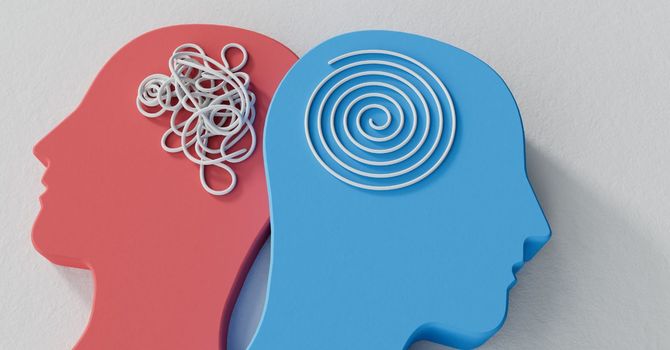Anxiety disorders are now the most frequently diagnosed mental health condition (Mental Health Disorder Statistics, 2023). This certainly reflects my professional experience: anxiety has become the most common presenting issue among the clients I support. In this article, I offer information to help you tell the difference between stress and anxiety. Some preliminary coping strategies are also discussed. Future articles will explore factors related to the increased prevalence of anxiety in our culture and elaborate on ways to cope.
Anxiety and Stress: how are they similar?
Both stress and anxiety typically cause a physiological reaction (adrenaline, cortisol, and other “stress hormones” are released; breathing and heartrate accelerate; blood is diverted to major muscle groups; vision narrows; etc.). There are also changes in the brain. We become focused on the here-and-now; and our ability to reason through complex problems is limited, as brain functions like working memory, attention, response inhibition, and cognitive flexibility are all impaired. Attention is diverted to figuring out the quickest way out of the situation we find ourselves in; we become reactive and emotions tend to be volatile.
Clearly, it’s easy to confuse stress and anxiety. They both involve very similar experiences, and symptoms such as muscle tension, increased breathing rate, rapid heartbeat, and sweating are common to both. Furthermore, stress can trigger anxiety and anxiety is often a symptom of stress (Moss, 2016). Who wouldn’t be confused? I think I might have just confused myself!
What is the difference, then?
You might be wondering: if the two are so similar, who cares about the difference? The main reason is because coping strategies for each cannot be used interchangeably. That is, stress management is not exactly the same as anxiety management, so knowing which tool to use requires that you know which one you’re dealing with.
Basically, stress is a reaction to a set of circumstances that tax our ability to cope (a challenge, threat, change, difficult situation, demand, etc.). The problem is the stressor. The reaction is the stress. A difficult situation may also be the source of anxiety, but anxiety can occur when there is no external problem and/or when the problem is relatively minor. In general, anxiety involves an overestimation of how negative the consequences of something will be and/or an underestimation of one’s coping resources. Basically, it says “I can’t handle this, something really bad is going to happen.”
A quick way to tell whether you are experiencing stress or anxiety is to examine the source: the source of stress is generally external (a tight deadline, a boss with unrealistic expectations, relationship difficulty, financial strain, etc.). Anxiety is internal, and tends to begin with a sense of worry, doubt, fear, or apprehension. Anxiety persists after the stressor has passed and may involve fretting about what will happen if the stressor returns.
What can I do about it?
First, it is important to recognize that stress and anxiety are not inherently damaging and problematic. Stress is unavoidable and anxiety is a normal human emotion. These universal human experiences help to prompt action and, since we don’t worry about things that don’t matter, stress and anxiety help reveal what’s important to us.
Since the source of stress is generally an external demand, addressing the issue (to the extent possible) is usually the most effective strategy. Since most of us occupy multiple roles and have




